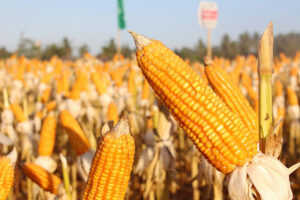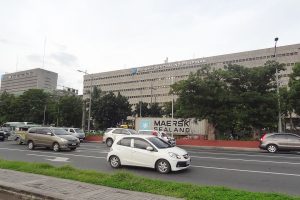Corn tariff lobbying intensifies as legislators prepare measure setting up competitiveness fund

TARIFFS have become a behind-the-scenes battleground for the corn industry, with farmers claiming they need protection from imports and the government seeking to use import tariffs to support an industry competitiveness fund.
“Prices should be more stable and predictable so farmers can be motivated in their planting intentions,” said Roger V. Navarro, president of farmers organization Philippine Maize Federation, Inc. (PhilMaize).
“Farmers… do not know if they will make money because of unstable policy direction,” he said in a Viber message.
Corn is a key commodity in the food value chain, supplying growers of livestock in the form of feed, which in turn affects the price paid by consumers for meat and eggs, showing up in inflation, which the government is currently struggling to control.
In July 2022, Senator Cynthia A. Villar filed the proposed Livestock, Poultry and Dairy Development and Competitiveness Act of 2022, as well as the proposed Yellow Corn Industry Development Act of 2022 (Senate Bill No. 120).
Senate Bill No. 120 also proposes the creation of a Corn Competitiveness Enhancement Fund, which will be funded from the tariff collections from corn and feed wheat imports.
“The bills are still in the technical working groups of the Senate Committee on Agriculture and Food. Looking forward to passing both bills before the end of the Congress this July,” Ms. Villar’s office said in a Viber message sent by her staff.
Weighing in on a Livestock Development Bill that reduces the tariff on corn imports is economist Calixto V. Chikiamco, a member of the board of the Institute for Development and Econometric Analysis.
“Our neighbor, Vietnam, imposes a 2% tariff on corn, while we insist on controlling imports of corn and a tariff of 15% for out-of-quota imports when our projected shortage is 2 million metric tons annually,” he said in an April 11 opinion column for BusinessWorld. High corn prices result in high cost of livestock, he added.
Mr. Chikiamco said pork and chicken prices rise in line with feed costs, “making them unaffordable to poor families suffering from protein malnutrition.”
The corn industry’s position is that it needs price predictability to ensure that farmers are encouraged to plant.
Mr. Navarro called for more investment in post-harvest facilities to store corn for release onto the market when needed to stabilize prices and supply, making farmer incomes predictable.
“We support the Livestock Development Bills of Senator Villar and (Rep. Jose Ma. Clemente S.) Salceda because of the earmarking of the tariff collection for the sector,” according to Elias Jose M. Inciong, president of the United Broiler Raisers Association, an industry that uses corn for feed. “We have also asked for the deletion of certain provisions to which the sponsors and the DA (Department of Agriculture) have acceded.”
Mr. Inciong said that provision is Section 15, which sought to automatically review the most-favored-nation tariff rates of chicken, pork, and corn.
“Although it was not stated outright, we knew for a fact that NEDA (the National Economic and Development Authority) wanted to permanently reduce the rates to 5% based on their presentations before the Senate Agri Committee,” he said in a Viber message.
“It would have decimated the poultry and livestock industries and rendered the above-mentioned bills inutile,” he added.
Corn is 40-50% of the cost of production of the feed, Mr. Inciong said.
“Tariff reduction for corn will not necessarily lead to lower pork and chicken retail prices. Importers are profit maximizers,” he added. “They will not pass on the savings as a matter of course.”
Tariffs are a form of protection for farmers, also pointed out Mr. Navarro, which if removed would be like exposing our farming to competition… without enough armor to protect themselves from the farmers (of other countries) who are highly subsidized by their governments,” he said. — Patricia B. Mirasol




